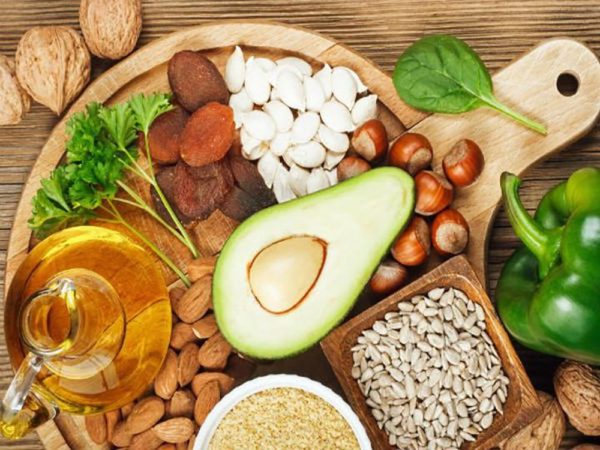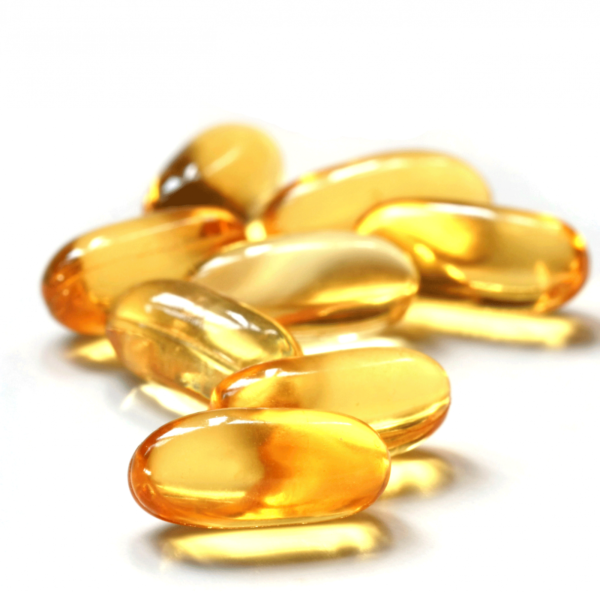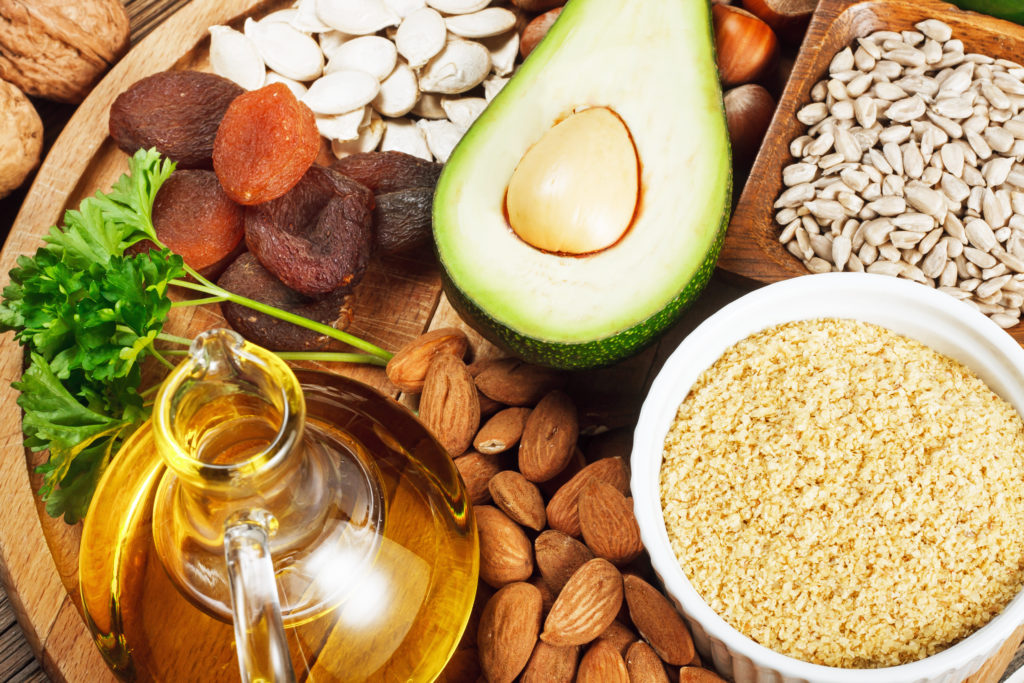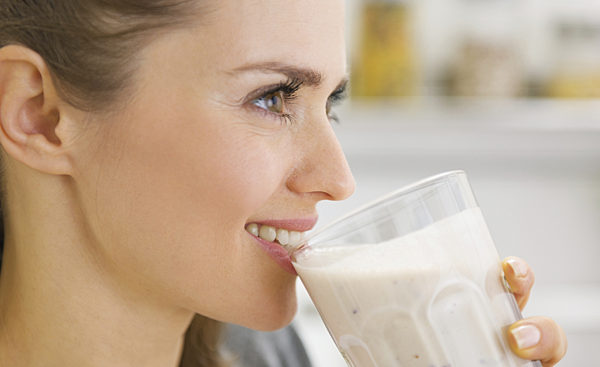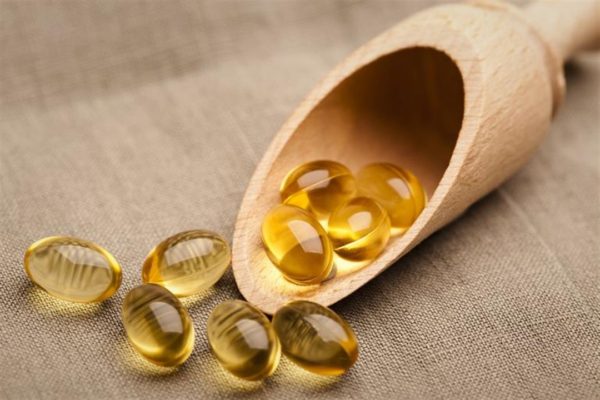Vitamin E Benefits: would have many health benefits and virtues. Vitamin E would protect against cardiovascular disease, cancer, and other conditions, and could even slow down the process of cellular aging.
What is Vitamin E?
Vitamin E is a generic term used to describe a family of compounds, tocopherols, classified into four broad categories: alpha-, beta-, gamma- and delta-tocopherols. Alpha-tocopherol is the most common and active form of alpha-tocopherol. Fat-soluble, vitamin E is stored in the body, mainly in the fatty tissues and liver. It is present in a limited number of foods, which are high in fat, which makes it difficult to achieve sufficient intake in low-calorie diets and the need for supplements if necessary. Vitamin E is mainly marketed as alpha-tocopherol, but prefer the products labeled “mixture of tocopherols” because the organism better assimilates these mixed forms. Vitamin E also facilitates the assimilation by the organism of selenium and Vitamin K. That said, before taking supplements, make sure to consult your doctor.
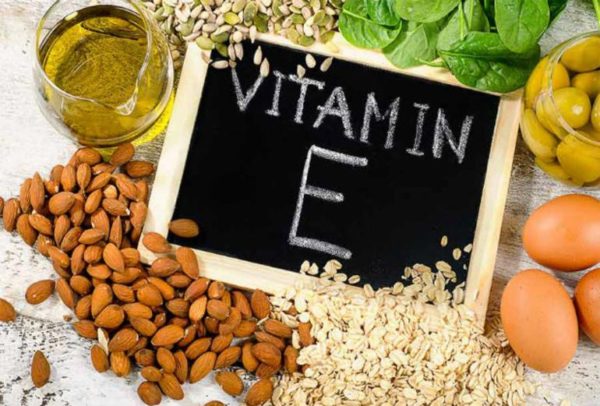
Vitamin E Benefits
An anti-aging supplement
Vitamin E now appears to be a particularly beneficial micronutrient. It would protect against cardiovascular disease, cancer, and other conditions and could even slow down the process of cellular aging. Discover the main benefits and benefits of vitamin A without delay.
A rich source of antioxidants
Vitamin E is especially valuable for its antioxidant properties; vitamin E is at the heart of many biological phenomena. Indeed, it can neutralize excess free radicals, which can put the cells at risk. It inhibits the formation of prostaglandins, which inhibits inflammatory processes. Vitamin E finally stimulates immune functions.
- The Benefits of Vitamin E to Counter Aging
Protecting cells from excess free radical damage, vitamin E may delay aging. Vitamin E improves the immunity of the elderly, helps to fight toxins of all kinds (tobacco smoke and other pollutants), delays the evolution of cataract and age-related macular degeneration. It could slow the progression of Alzheimer’s disease, or even Parkinson’s disease.
Vitamin E for Heart Health
This vitamin can protect against cardiovascular diseases, including heart attacks and strokes, because it slows down the formation of atheroma plaque and prevents the creation of blood clots. By reducing the inflammatory processes associated with heart disease and by promoting the elevation of the good cholesterol (HDL), it protects against recurrences. Two large-scale studies have shown that vitamin E reduces the risk of cardiovascular disease by 25-50%. According to recent research, taking a complex of vitamins E and C would neutralize some of the harmful effects of a diet too high in fat.
Vitamin E deficiency
The risk of severe vitamin E deficiency is low in developed countries. It is generally related to diseases that cause fat absorption disorders (e.g., cystic fibrosis, celiac disease, and Crohn’s disease). It is mainly in the long term that the symptoms of deficiency manifest, usually by neurological problems due to poor nerve conduction. On the other hand, the recommended nutrient intake (ANR) of vitamin E, which is set at 15 mg alpha-tocopherol (the natural form) per day, would not be fully met by the diet of North Americans.
According to a survey conducted in the US between 2001 and 2002, Americans would benefit from consuming significantly more vitamin E-rich seeds and nuts, such as almonds or sunflower seeds, ANR. This advice is probably valid for Canadians whose diet is similar to that of their neighbors to the south. In addition, according to the US authorities, people on a low-fat diet should choose their foods, including their fat, carefully, to ensure adequate intake of vitamin E.
Benefits for the elderly
Vitamin E supplements could strengthen the immune system of the elderly. In a study of 88 healthy subjects aged 65 years and older, there was a marked improvement in immune responses, such as antibody production, in people taking a 135 mg supplement of vitamin E per day.
Vitamin E for better pain relief
Vitamin E aid in treating the acute pain of intermittent claudication, and it relieves breast hypersensitivity during the premenstrual period. Finally, incorporated into creams or oils and applied to the skin, it facilitates wound healing.

For better protection against cancer
Finally, it is probably as a protective antioxidant of cell membranes that vitamin E, especially that brought by food, would play a beneficial role in the prevention of certain cancers (lungs, stomach).
Food sources of vitamin E
- Wheat germ oil
- Sunflower oil
- Almonds
- Hazelnut
- Cereal Seeds
- Some green leafy vegetables
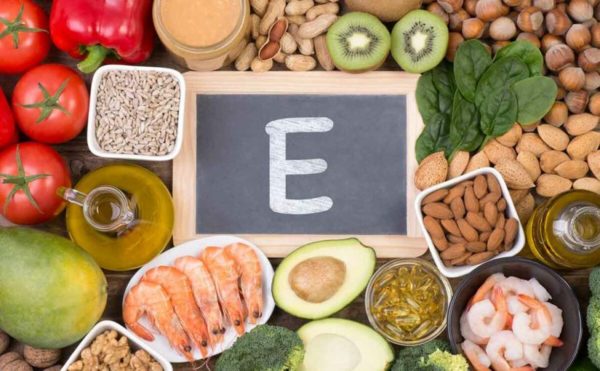
Precautions
Under 400 IU per day, vitamin E does not pose a health risk. At higher doses, some scientists question the safety of its regular intake by some people. See in the box above: “Safe, Vitamin E? “.
Maximum tolerable intake of vitamin E
Age
- 1 to 3 years
200 mg / 300 IU - 4 to 8 years
300 mg / 450 IU - 9 to 13 years
600 mg / 900 IU - From 14 to 18 years
800 mg / 1200 IU - Over 18 years
1,000 mg / 1,500 IU
Contraindications
Because of an increased risk of hemorrhaging, people with vitamin K deficiency should not take high doses of vitamin E supplements without the supervision of a health professional.
Side effects
- Very rarely, taking vitamin E supplements can cause problems with blurred vision, diarrhea, dizziness, headaches, nausea, abdominal cramps, and unusual weakness or fatigue.
- In external use, vitamin E may exceptionally cause dermatitis (inflammation of the skin).

Interactions
Firstly: with supplements
- Theoretically, the effects of high doses of vitamin E (1000 IU per day) could be added to those of plants and supplements whose action is anticoagulant or anti-platelet (garlic, Ginkgo Biloba, ginseng, etc.).
With medications - Also, the effects of high doses of vitamin E (1,000 IU per day) could be added to those of synthetic drugs with anticoagulant or anti-platelet action (warfarin, heparin, aspirin, etc.).
- Drugs such as colestipol and cholestyramine, that reduce blood cholesterol and lipids, and those that decrease the absorption of fat (orlistat), may reduce the absorption of vitamin E.
Anti-convulsant drugs (phenytoin and carbamazepine, for example) may reduce blood levels of vitamin E. - Isoniazid, an anti-tuberculosis drug, can reduce the absorption of vitamin E.
Secondly: with food
- Olestra Fat Substitute (not permitted in Canada) may reduce the absorption of vitamin E.
